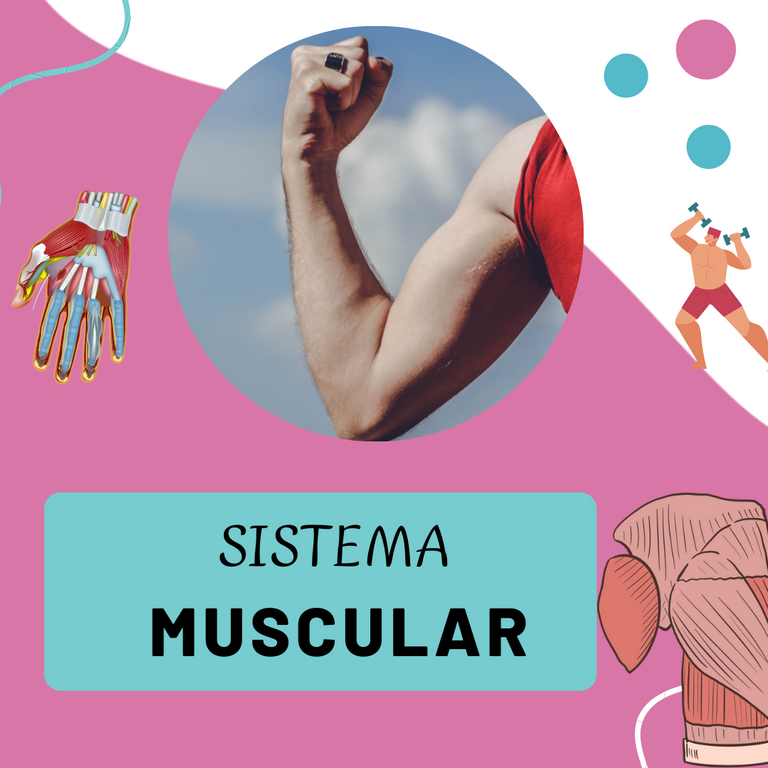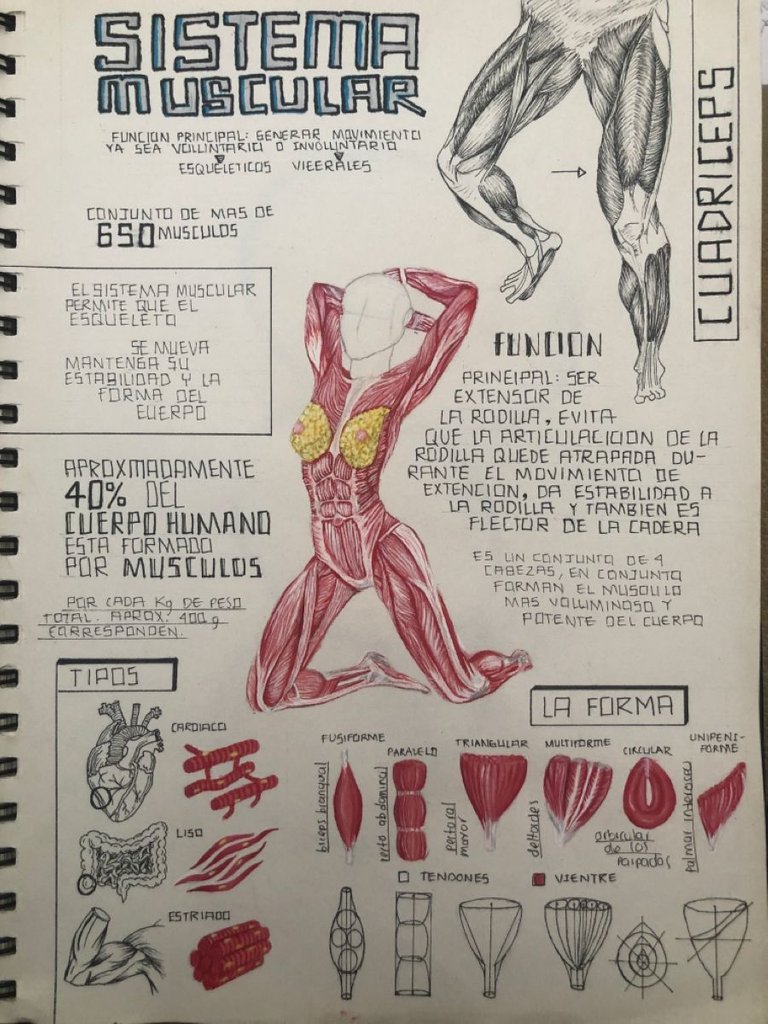
espero se encuentren muy bien
hola amigos espero se encuentren todos muy bien, el día de hoy hablaremos sobre nuestro segundo sistema, “el sistema muscular”o de locomoción humana como también se le conoce, empecemos definiendo que es un sistema de tejidos que compone todo el cuerpo, esta interrelacionado con el sistema óseo y nervioso se encarga de generar los movimientos del cuerpo de manera coordinada. En definición el sistema muscular, es el conjunto de más 600 músculos que poseemos, es decir en promedio un 50% del peso corporal corresponde al musculo esquelético, un dato importante que debes aprender es que la sustancia principal, que utiliza el musculo para sus funciones es el “GLUCOGENO”.Te dejo una imagen para estudiar los musculos.
Hello friends I hope you are all very well, today we will talk about our second system, "the muscular system " or human locomotion as it is also known, let's start by defining that it is a system of tissues that makes up the entire body, is interrelated with the skeletal and nervous system is responsible for generating the movements of the body in a coordinated manner. In definition the muscular system, is the set of more than 600 muscles that we have, that is to say on average 50% of body weight corresponds to skeletal muscle, an important fact that you should learn is that the main substance used by the muscle for its functions is the "GLUCOGEN ".I leave an image to study the muscles.


Entre las funciones principales de este sistema podemos nombrar las siguientes: estabiliza la posición del cuerpo, produce movimiento, regula el volumen de los órganos, produce calor y transporta sustancias dentro del cuerpo. Estos músculos se clasificas en categorías, precisamente en tres grupos estos son: El musculo liso, que forma las paredes de las vísceras huecas, como el estómago, la vejiga, se encuentran en sistemas como: el respiratorio, digestivo, órganos reproductores entre otros. Son involuntarios los músculos lisos, pues el sistema nervioso los rige. El segundo grupo es el musculo estriado o esquelético, la estriada le da forma al cuerpo y esta entrelazada con los huesos, generalmente en las piernas, brazos y abdomen. Se denominan estriados por que los compone bandas alternas de color claro y oscuro que son voluntarias. Y nuestra última clasificación es el musculo cardiaco, se encuentra en el corazon ,posee 4 propiedades vitales: Ritmo, capacidad para generar impulsos periódicos., Conductividad: es la capacidad de transmitir los impulsos al tejido del miocardio. Irritabilidad: propiedad para responder a los estímulos. Contractibilidad: su funcionalidad es contraer a un estímulo correcto. Encontré un material visual que se, que te ayudara bastante. Gracias por leerme nos leemos en mi próxima publicación.
Among the main functions of this system we can name the following: stabilizes the position of the body, produces movement, regulates the volume of the organs, produces heat and transports substances within the body. These muscles are classified in categories, precisely in three groups, these are: The smooth muscle, which forms the walls of the hollow viscera, such as the stomach, bladder, are found in systems such as: respiratory, digestive, reproductive organs among others. Smooth muscles are involuntary, as they are governed by the nervous system. The second group is the striated or skeletal muscle, the striated muscle gives shape to the body and is intertwined with the bones, generally in the legs, arms and abdomen. They are called striated because they are composed of alternating bands of light and dark color that are voluntary. And our last classification is the cardiac muscle, it is found in the heart, it has 4 vital properties: Rhythm, capacity to generate periodic impulses, Conductivity: it is the capacity to transmit the impulses to the myocardium tissue. Irritability: property to respond to stimuli. Contractility: its functionality is to contract to the correct stimulus. I found some visual material that I know will help you a lot. Thank you for reading me, see you in my next publication.


nuevamente ¡gracias por tu apoyo Un fuerte abrazo!
See you in my next publication,
thanks again for your support A big hug!
El contenido es 100% de mi autoría ,debo resaltar que la informacion que plasmo es totalmente mia ,son mis apuntes y aprendisajes a lo largo de mi carrera (Enfermeria)
Fotografías desde mi teléfono moto E4 plus
las ediciones de mis diseños www.canva.com/
Traductor www.deepl.com
The content is 100% of my own authorship, I must emphasize that the information that I present is entirely my own, they are my notes and learning throughout my career (Nursing).
Photographs from my moto E4 plus phone
editions of my designs www.canva.com/
Translator www.deepl.com

Su post ha sido valorado por @ramonycajal